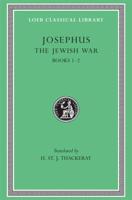Publisher's Synopsis
The architectural inventory documents all the structures of the Sacred Centre of Vijayanagara, the great ruined Hindu capital on the Tungabhadra River in central Karnataka. The Sacred Centre is of outstanding interest from the historical and religious point of view, since it is the oldest part of the Vijayanagara site, with shrines dating back to the ninth century AD. With the establishment of the capital by the Sangamas in the fourteenth century, it was the Sacred Centre that was first developed, with much building activity occurring around the Virupaksha sanctuary in Hampi. As the capital expanded under the Sangamas and Tuluvas in the course of the fifteenth and first half of the sixteenth centuries, other significant religious monuments were establishmed in the Sacred Centre, especially in the urban quarters of Hampi, Krishnapura, Achyutapura and Vitthalapura. Scattered along the south bank of the Tungabhadra over a distance of some 5 km, these monuments fully illustrate the evolution of the Vijayanagara architectural style. The inventory is based on more than twenty years of fieldwork conducted by teams of architects and art historians under the guidance of the authors. It describes more than 400 structures, ranging from large-scale temple complexes, such as those dedicated to Virupaksha, Balakrishna, Tiruvengalanatha and Vitthala, to simpler and smaller shrines consecrated to a variety of deities, as well as mandapas, gateways, water features and other structures, most of which are reproduced here for the first time. The architectural descriptions, location maps, measured drawings and photographs are divided into three volumes.







